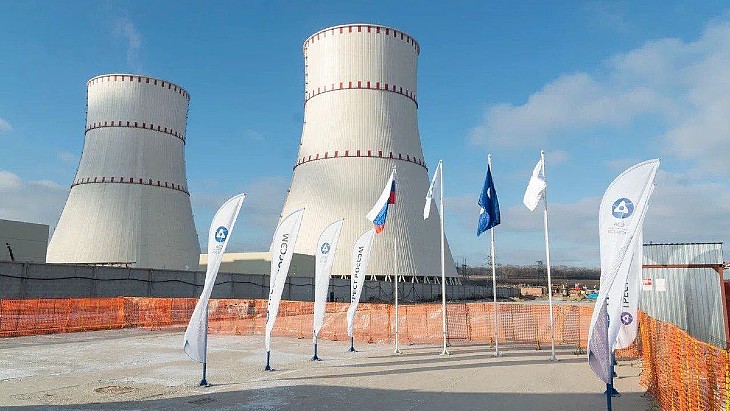Toshiba has opened a new facility in Japan equipped with a high-temperature liquid-sodium test loop for conducting advanced research on fast reactor technology.
 |
| The high-temperature liquid-sodium test loop (Image: Toshiba) |
The new facility is located near the Isogo Nuclear Engineering Centre (IEC) in Yokohama, Toshiba's main engineering centre for its nuclear power business. Construction of the three-storey building began in April 2007 and was completed in December.
Toshiba said that the test loop is one of the largest operated by any Japanese manufacturer in terms of flow rate and the heating and cooling capacity of liquid sodium. The test loop operates at a maximum temperature of 600°C, with a flow rate of one cubic metre of liquid sodium per minute. Toshiba plans to increase the flow rate to ten cubic metres per minute.
The test loop will be used to conduct simulations of sodium coolant at actual operating temperature and flow rates. Toshiba said that operation of the facility will provide essential data for fast reactor system design and verification of analysis methods. Toshiba also develops dedicated pumps, steam generators and measuring instruments for liquid sodium systems, and the test loop will be used to confirm their performance to specifications.
In a statement Toshiba said: "As the world experiences a nuclear renaissance, resources are being channelled to accelerated development of fast reactors, which make highly efficient use of fuel resources. In anticipation of the transition to fast reactors, Toshiba will further enhance its sodium-related technology, in readiness for future business expansion in this promising market."
Yasuharu Igarashi, executive vice president of Toshiba's Power Systems Company, commented: "We are delighted to celebrate completion of this new state-of-the-art liquid-sodium test loop and its excellent testing capabilities. The test loop will support our contributions to Japanese and international projects to advance adoption of nuclear energy, particularly Japan's Fast Reactor Cycle Technology Development Project and the Global Nuclear Energy Partnership (GNEP) in the United States. We believe the new research facility also allow us to realize early launch of the 4S system, which we want to commercialize as a distributed power source in the late-2010s."
Amongst other fast reactors under development, the Super-Safe, Small & Simple (4S) 'nuclear battery' system is being developed by Toshiba and the Central Research Institute of Electric Power Industry (CRIEPI) in Japan. It is being developed in collaboration with work being conducted by Argonne National Laboratory and Lawrence Livermore Laboratory under the Secure Transportable Autonomous Reactor (STAR) project in USA.
The 4S reactor uses sodium as coolant (with electromagnetic pumps) and has passive safety features, notably negative temperature and void reactivity. The whole unit would be factory-built, transported to site, installed below ground level, and would drive a steam cycle. It is capable of three decades of continuous operation without refuelling. Steady power output over the core lifetime is achieved by progressively moving upwards an annular reflector around the slender core. After 14 years, a neutron absorber at the centre of the core is removed and the reflector repeats its slow movement up the core for 16 more years. 10 MWe and 50 MWe versions of 4S are being developed.




_30199.jpg)
_72306.jpg)

_49562.jpg)





